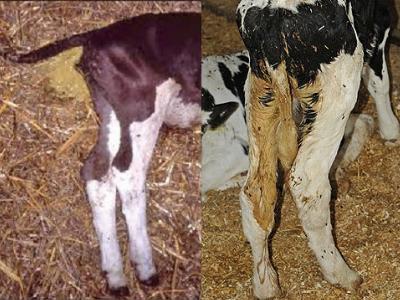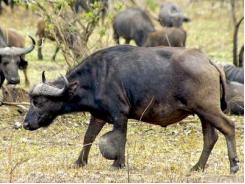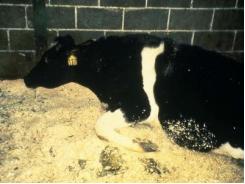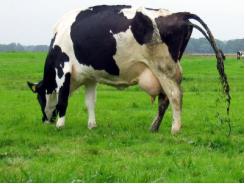Diseases of Cattle: CALF SCOURS

Calf scours or calf diarrhea causes more financial loss to cow-calf producers than any other disease-related problem they encounter. But calf scours is not a disease but a symptom of a disease which can have many causes. In diarrheas, there is a discharge of more fluid than normal from the bowel, often more frequently than normal. The discharge can be white, yellow, grey or blood-stained, and is often foul-smelling. Although more common in hand-reared calves, it can also occur in calves which are being suckled by their mothers.
Since a calf is approximately 70 percent water at birth, loss of body fluids through diarrhea can produce rapid dehydration. Dehydration and the loss of certain electrolytes produce a change in body chemistry in the calf. Although infectious agents may be the cause of primary damage to the intestine, death from scours is usually due to loss of electrolytes, changes in body chemistry, dehydration, and change in acid-base balance rather than by invasion of an infectious agent. The infectious agent that causes scours can be a virus (BVD, Rotavirus, coronavirus), bacteria (E. coli, salmonella, Enterotoxemia) or protozoa (coccidiosis, cryptosporidium).
Treatment for scours is very similar regardless of the cause. It should be directed toward correcting the dehydration, acidosis, and electrolyte loss. Antibiotic treatment can be given simultaneously with the treatment for dehydration. Dehydration can be overcome with simple fluids given by mouth early in the course of the disease. If dehydration is allowed to continue, intravenous fluid treatment becomes necessary. The age of the calf when scours begins is an important consideration in its survival. The younger the calf, the greater the chance of death.
Recent research has indicated that many scour cases can be directly related to lack of colostrum intake by the newborn calf. A calf that is well mothered and consumes 1 to 2 quarts of colostrum in the first few hours after birth absorbs a higher level of antibodies and is far less susceptible to scours and other calfhood diseases.
Related news
Tools

Phối trộn thức ăn chăn nuôi

Pha dung dịch thủy canh

Định mức cho tôm ăn

Phối trộn phân bón NPK

Xác định tỷ lệ tôm sống

Chuyển đổi đơn vị phân bón

Xác định công suất sục khí

Chuyển đổi đơn vị tôm

Tính diện tích nhà kính

Tính thể tích ao




 Diseases of Cattle: CANCER EYE
Diseases of Cattle: CANCER EYE  Diseases of Cattle: BVD - Bovine Virus Diarrhea
Diseases of Cattle: BVD - Bovine Virus Diarrhea